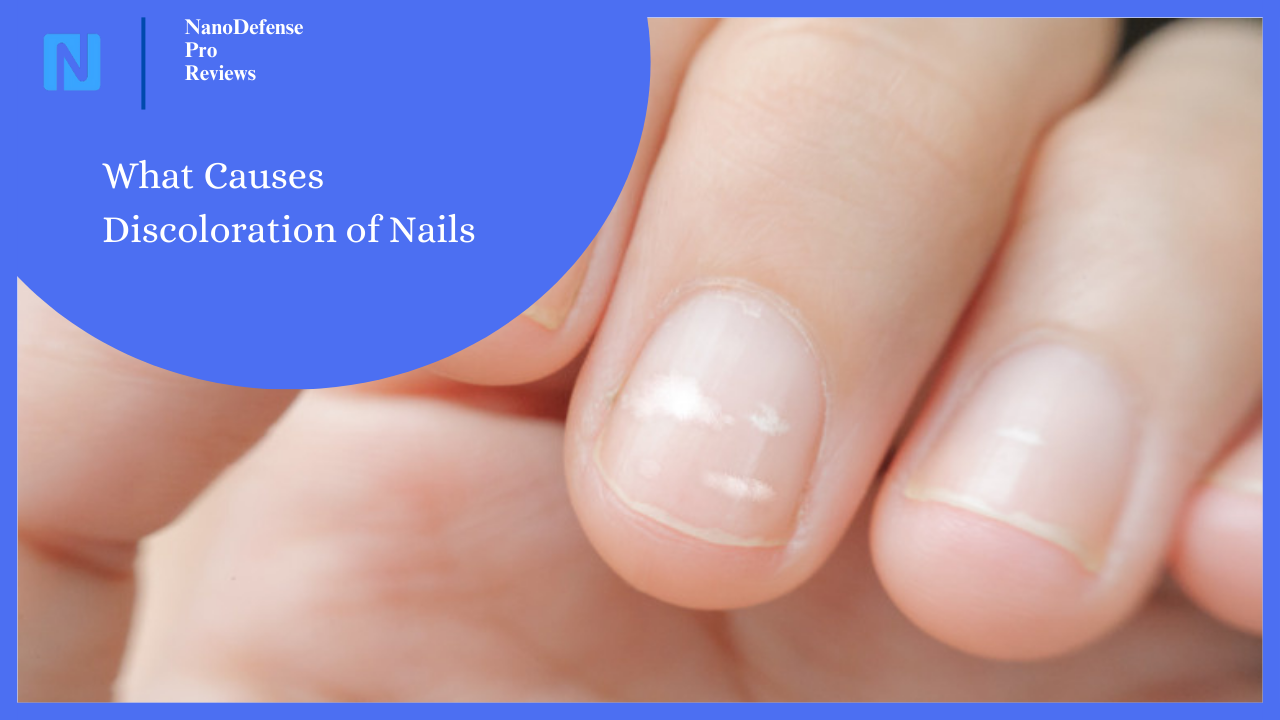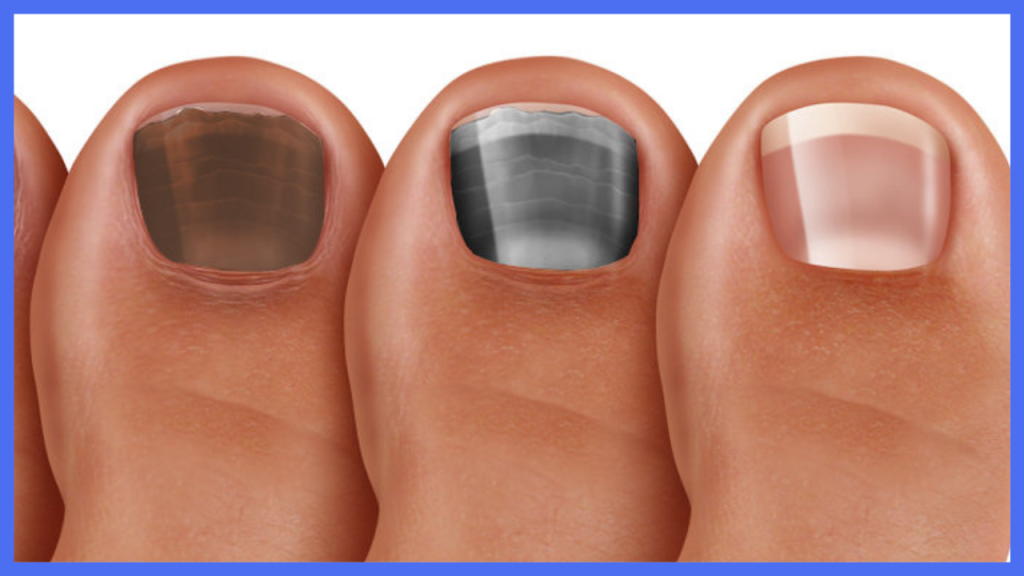What Causes Discoloration of Nails: Understanding Nail Color Changes
Nail discoloration can be a sign of various underlying factors, from bacterial and fungal infections to medical conditions and lifestyle choices. By understanding these causes, you can take proactive steps to maintain healthy nails and seek medical attention when necessary. Keep your nails clean, dry, and trimmed, and consult a healthcare professional if you notice unusual discoloration.

Disclaimer: This article has been generated with the assistance of AI tools. While our research team has fact-checked the content, readers should independently verify information for accuracy and reliability.
Our nails are made up of a tough protein called keratin. They protect the sensitive skin underneath and the tips of our fingers and toes. Healthy nails are smooth, firm, and have a slightly pinkish color due to the blood vessels underneath. However, sometimes our nails can change color and develop spots, streaks, or an overall discoloration. This could be a sign of an underlying health condition or infection. So “what causes discoloration of nails”? Let’s find out!
Common Nail Discoloration Colors
While healthy nails have a natural pinkish hue, as per American Academy of Dermatology discolored nails can appear in various colors depending on the cause:

- Yellow nails
- Brown or tan nails
- Black or dark lines/streaks
- Green or bluish nails
- White streaks or spots
The color of the nail discoloration can provide clues about “what causes discoloration of nails” in each case.
What Causes Discoloration of Nails?
There are many different reasons why nails can become discolored. Here are some of the main causes that are based on findings from MedlinePlus:
- Fungal Nail Infections
One of the most common causes of nail discoloration is a fungal infection called onychomycosis. As the fungi grow under the nail, it can turn the nail yellow, brown, or even black and crumbly. - Bacterial Infections
Certain types of bacteria like pseudomonas can also infect the nails, leading to greenish, darker streaks. Bacterial nail infections often occur after an injury to the nail. - Nail Injury/Bruising
If you injure or trauma the nail matrix (base) or nail bed, it can cause bleeding under the nail. This trapped blood turns brown or black as it dies, discoloring the nail. - Nail Polish/Lacquers
Using dark-colored nail polish for long periods can stain or tint the nails yellow or brownish over time. Nail lacquers and hardeners may also discolor nails. - Smoking
The nicotine and chemicals in cigarettes can turn nails a yellowish, brownish stain color in heavy smokers over many years. - Diseases and Medications
Certain diseases like diabetes, skin conditions, kidney and thyroid disorders can all affect nail color and health. Some medications may also cause nail pigmentation changes as a side effect. - Nutritional Deficiencies
Not getting enough nutrients like protein, vitamin C, or certain minerals from your diet can impact nail growth and appearance, sometimes causing white streaks or lines. - Chemical Exposure
Frequent contact with harsh chemicals, detergents, or solvents can alter nail color or cause white streaks. For example, haircare products can stain nails green-black. - Yellow Nails
Besides fungal infections, yellow nail syndrome can cause extremely slow-growing yellow nails. Diabetes and thyroid disorders may also turn nails yellowish. - Brown or Tan Nails
Outside of fungal infections and aging, a rare genetic condition called argyria can turn nails (and skin) a bluish-gray or tan color after exposure to silver products. - Black Nails or Streaks
While bleeding under the nail can cause this, another possible cause is melanoma (skin cancer) spreading to the nail matrix or bed. - Green or Blue Nails
This may be caused by a bacterial infection like Pseudomonas aeruginosa getting under the nails. Copper exposure or nail cosmetics can also tint nails greenish. - White Streaks or Lines
Known as “nail ridges” or “railroad tracks,” white lines are usually due to minor trauma or injury to the nail. But they can also signal kidney disease, heart disease, or nutrient deficiencies.
What Causes Discoloration of Nails And Should You See a Doctor?
While some causes of nail discoloration are harmless, others require medical treatment. See your doctor if:
- The discoloration doesn’t go away or keeps getting worse
- You develop nail thickening, brittleness, or crumbling
- There is pus, redness, swelling around the nail
- You have diabetes or a compromised immune system
- There are dark lines or streaks suddenly appearing
Getting nail discoloration properly diagnosed and treated can prevent the condition from worsening or spreading to other nails.
Treating Discolored Nails
Treatment depends on “what causes discoloration of nails” in each specific case. Some options include:
- Oral or topical antifungal medications for fungal infections
- Oral antibiotics for bacterial nail infections
- Steroids or vitamin D for certain skin conditions
- Addressing any nutritional deficiencies
- Surgical or chemical nail removal as a last resort
what causes discoloration of nails can range from something as simple as injury or chemicals, to more serious underlying conditions. Pay attention to changes in nail color or texture, and see a doctor promptly to identify and address the root cause.
Practicing good nail care and hygiene can also help nails heal and grow out properly. With the right treatment approach, most cases of nail discoloration can be resolved. Always make sure to use quality products when treating the symptoms. Products like NanoDefensePro helps in fighting against nail related issues. One must almost keep in mind to consult their physician before taking and medications or treatments.
Conclusion
Nail discoloration can be caused by various factors, including fungal and bacterial infections, injury, wearing nail polish, and underlying health conditions. By understanding what causes discoloration of nails, you can better take care of your nails and your overall health. Remember, your nails can give you important clues about your health. Pay attention to any changes in the color or texture of your nails, and don’t hesitate to see a doctor if you notice anything unusual.
Related : What Kills Toenail Fungus Instantly? The Proven Remedies That Work Fast

Lisa Miller
Dr. Lisa Miller is a board-certified Dermatologist with over 15 years of experience treating a wide range of skin, hair, and nail conditions. She received her medical degree from the prestigious Columbia University College of Physicians and Surgeons and completed her dermatology residency at the University of California, San Francisco, one of the top dermatology training programs in the country. Dr. Miller is an active member of the American Academy of Dermatology and has authored numerous peer-reviewed articles and book chapters on the latest advancements in dermatological care. She is frequently invited to speak at national and international medical conferences, sharing her expertise with other clinicians. In her private practice, Dr. Miller takes a patient-centered approach, collaborating closely with each individual to develop customized treatment plans. She is passionate about empowering her patients to achieve optimal skin, hair, and nail health through a combination of the latest medical therapies and lifestyle recommendations.
